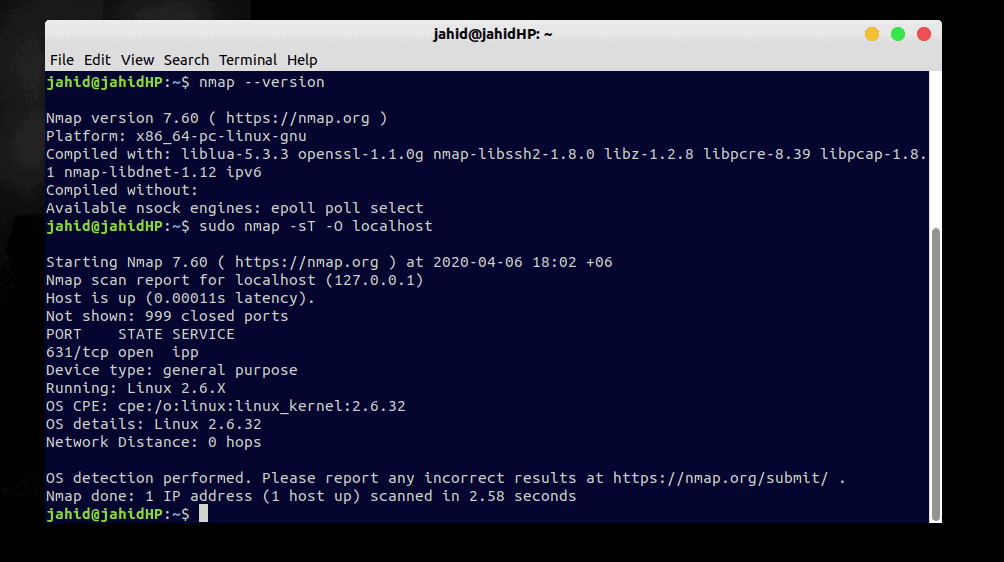

- CHECK ETHERNET STATUS ON UBUNTU VIA TERMINAL HOW TO
- CHECK ETHERNET STATUS ON UBUNTU VIA TERMINAL INSTALL
- CHECK ETHERNET STATUS ON UBUNTU VIA TERMINAL DRIVER
- CHECK ETHERNET STATUS ON UBUNTU VIA TERMINAL MAC
Check your gateway ip address and then type it in a browser. The process is very simple and easy to use even for beginners.īefore you see any of that, let me tell you that your router should also be able to show all the connected devices. We will use both, command line and GUI, way for finding out what devices are connected to your local network in Linux. Not only it’s a good idea from security point of view, it is also a good little exercise if you have interest in networking.
CHECK ETHERNET STATUS ON UBUNTU VIA TERMINAL HOW TO
I’ll show you how to do that in this quick tutorial. So you might end up thinking, “how do I find what devices are connected to my network”? This way you can also see if there are some unwanted devices on your network. It would be nice to check what devices are on your network. Wireless networks are also more vulnerable to hacking than the wired ones.įorget hacking, do you ever wonder that someone might be leeching off your hard paid wifi network? Maybe a neighbor who once connected to your network and now uses it as his/her own? Wireless networks have always been a desirable target for wannabe hackers. $ lspci | grep -i 'ethernet'Ġ3:00.Brief: This quick trick shows you how to find devices connected to your local network in Linux. To find the name of Ethernet card(s) available on your system, run the following.
CHECK ETHERNET STATUS ON UBUNTU VIA TERMINAL INSTALL
To install lspci on CentOS, Fedora or RedHat: $ sudo yum install pciutils To install lspci on Ubuntu or Debian: $ sudo apt-get install pciutils If all you need to know is the product/vendor name of your Ethernet card, you can use lspci command which displays information about PCI buses and connected PCI devices. Product: NetXtreme II BCM5709 Gigabit EthernetĬapabilities: pm vpd msi msix pciexpress bus_master cap_list rom ethernet physical tp 10bt 10bt-fd 100bt 100bt-fd 1000bt-fd autonegotiationĬonfiguration: autonegotiation=on broadcast=yes driver=bnx2 driverversion=1.7.5 duplex=full firmware=5.2.3 NCSI 2.0.6 ip=192.168.10.78 latency=0 link=yes multicast=yes port=twisted pair speed=1GB/s To show detailed vendor information of your NIC, run the following. To install lshw on Fedora, simply run: $ sudo yum install lshw To install lshw on CentOS or RedHat, first set up Repoforge repository on your system, and then run: $ sudo yum install lshw To install lshw on Ubuntu or Debian: $ sudo apt-get install lshw The second method is via lshw, a command-line utility for showing detailed hardware specification of a Linux machine.
CHECK ETHERNET STATUS ON UBUNTU VIA TERMINAL MAC
To find factory-default MAC address information: $ ethtool -P eth0
CHECK ETHERNET STATUS ON UBUNTU VIA TERMINAL DRIVER
To find Ethernet device driver and firmware information: $ ethtool -i eth0 Supported link modes: 10baseT/Half 10baseT/FullĪdvertised link modes: 10baseT/Half 10baseT/Full The reason for sudo access in this case is to allow ethtool to obtain wake-on-LAN settings and link status. It is assumed that the NIC card is assigned the name eth0. To display hardware settings of a network interface card with ethtool, run the following command. To install ethtool on Fedora, CentOS or RedHat: $ sudo yum install ethtool To install ethtool on Ubuntu or Debian: $ sudo apt-get install ethtool The first method is to use ethtool, a command-line tool for checking or modifying PCI-based Ethernet card settings. In this tutorial, I will describe how to find Ethernet NIC information from the command line in Linux. For example when you check whether a particular network device driver or a kernel module is compatible with your Ethernet adapter, you need to know its hardware specification such as NIC model/vendor (e.g., Broadcom NetXtreme, Intel I350), speed (e.g., 1GB/s, 10GB/s), link mode (e.g., full/half duplex), etc. Sometimes you may want to know the product name or hardware settings of the network interface cards (NICs) attached to your Linux system. How to find Ethernet network interface card information in Linux


 0 kommentar(er)
0 kommentar(er)
